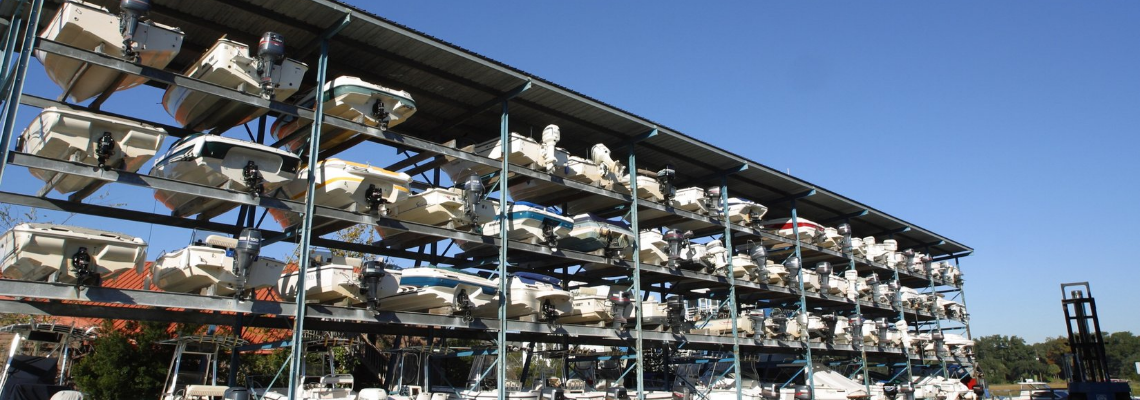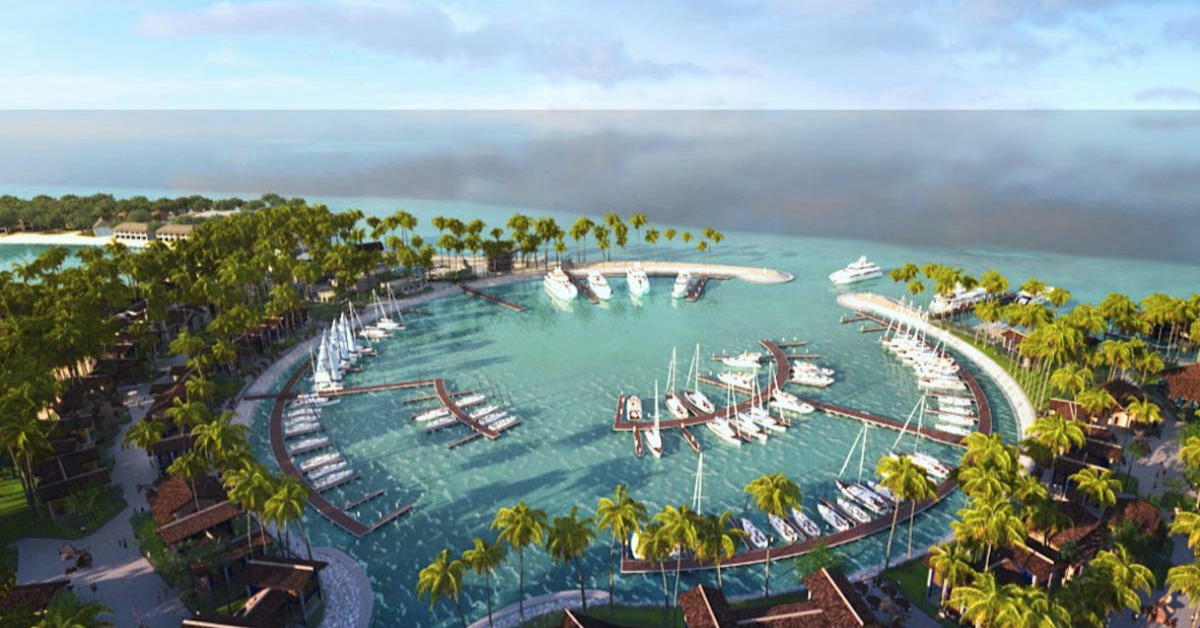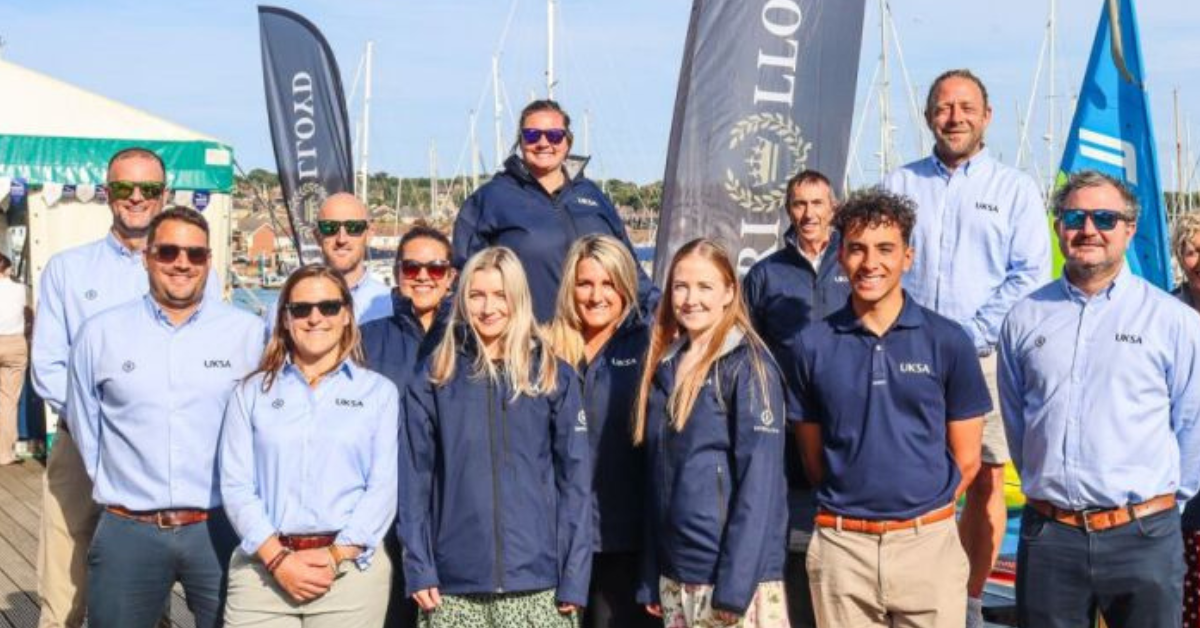How can dry stacking contribute to more sustainable boating?

As the recreational boating world adapts to the demands of enhanced sustainability and plays its part in protecting the ocean environment, the role of marinas and the services they provide will also be an important part of the equation.
For instance, last month we shared information from a presentation given at the ICOMIA World Marinas Conference, which suggested several ideas about how marinas could become more involved in Circularising the activities of the boating community. And, following neatly on from that, there was an interesting ‘Tech Talk’ panel discussion as part of the METSTRADE TV program this year, which was entitled: ‘Dry Stack to the Next Level.’
I must admit to having a personal interest in this subject, having been a happy customer of a dry stack marina when I lived and worked in Singapore for several years back in the 90’s. Having previously kept boats on the wet moorings in the UK, I did initially find the idea of hauling out and stacking my boat every time I use it, to be just a little bit strange. But as I adjusted to living in an island state of only 50km long by 27km wide, with a population of over 5 million people, and a very large city infrastructure, it quickly dawned on me that dry stacking made a lot of sense, because ‘going up’ does not occupy too much valuable land space.
And with an average year-round sea temperature in the high 20’s (Centigrade) I also quickly learned that the challenge of marine biofouling (another much discussed subject at METSTRADE) was an extreme one indeed in the waters so close to the equator. Therefore, only having a boat in the water when you actually want to use it, has a huge advantage by removing the entire hassle and cost of antifouling.
Just as importantly, dry stacking eliminates the potential for toxicity from antifouling coatings to contaminate the oceans and reduces the possibility of oil and fuel leaks into the water. Also, very much in tune with the aims of the IMO GloFouling Project, the buildup of fouling and invasive aquatic species is largely avoided, as both occur exponentially when boats lay idle for months in the water.
Dry stacking background.
The Tech Talk panel discussion was co-hosted by Oscar Siches, a man who knows a thing or two about marina management. Oscar has developed two large marinas in Mallorca and operated them successfully for 15 years. He was recently the winner of the first ever ‘Golden Cleat Award’ at this year’s World Marina Conference in Dubai; an accolade that honours outstanding individuals who have demonstrated a true commitment to the global marina community throughout their careers
Oscar mentioned that the dry stacking of boats has been around since the 1960’s, and that the USA and Argentina were very much in the vanguard of developing the concept. Initially focusing on ways to keep smaller trailerable boats out of the water and protected from the elements. Argentina which has a strong yachting tradition, has pushed ahead quite vigorously with the idea due to strong winds and extra high tide conditions around their coastline. Today dry stacking facilities north of Buenos Aires have an availability of around 146,000 berths.
Aesthetics, storm and fire resistance are key.
Joining the panel alongside Oscar, were Augusto Carosi Director of Drysta Europe, a specialist in supplying transportation apparatus for dry stacking boats, and Robert Brown, President of GCM Contracting Solutions. Their subsidiary, Safe Harbour Dry Stacks, has completed several turn-key construction solutions for storm safe concrete marine structures that keep boats securely stacked under shelter.
GCM completed the large dry storage facility at Hamilton Harbour Yacht Club in Florida over a decade ago. It’s the first solid concrete tilt-wall boat storage facility of its kind in the world and can withstand 150-mile-per-hour winds. The construction has one of the highest hurricane protection ratings in Southwest Florida, and it has solid concrete panels separating each bay, giving an increased level of fire protection for boats in storage.
Robert commented about the importance of aesthetics, which has sometimes been a barrier to obtaining planning permission for dry stacking proposals. In the past they could be quite ugly when they consisted of a pre-engineered metal construction which stood out as an eyesore on the shoreline and offended nearby residents. The finished Hamilton Harbour project and several others have structures that totally enclose the stacked boats, and have been designed to blend in with surroundings such as local architecture and scenery, thus removing objections from local communities.
Electrification and automation - changing the Dry Stack proposition.
Casting my mind back to the mid 90’s in Singapore; I still remember the slightly scary experience of watching my boat being lifted out of the water and stacked on the storage shelf by a noisy converted forklift truck, with its diesel engine belching out fumes, and sometimes the whole rig swaying around perilously, depending on the skill (or not) of the driver on any particular day.
So, I was very interested to hear what Augusto had to say about how boat lifting cranes are specifically designed for Dry Stacking facilities, and how the technology has significantly advanced in recent years.
He said that like many modes of transport and logistics these days, the dry stacking cranes can be electrically driven with plenty of power to do the job, all without fumes, noise or C02 emissions. It is also possible to automate the movement of boats so that less manual labour is involved. And selective storage can be built into the software so that boats are not always placed back in the same shelf but located where there is best availability of space. With boats stacked one behind the other, it is also possible in future to incorporate some degree of artificial intelligence. This would enable a boat that is used more regularly to be placed at the front, and one that is infrequently used to sit further behind.
Augusto also mentioned how Dry Stacking systems can improve the utilisation of available space. For instance, relocating small boats out of wet slips and making more water area available for larger yachts. He also mentioned a project where 50 wet slips had been filled in and replaced with a Dry Stack facility which trebled the capacity to 150 boats.
The ‘immediate pleasure’ customer experience.
Another thing I remember well about my Dry Stacking days in Singapore, is the convenience of calling the marina about 45 minutes before I planned to arrive onboard. And by the time I got there, the boat was uncovered, refuelled and tied up on the dock, ready to go!
Robert Brown mentioned how this total customer convenience experience can be further enhanced with additional services which benefit the boater and bring more revenues to the marina. For instance, valeting services for your car while its parked. Or provisioning with food, drinks etc, so that the boat owner only has to bring himself and his crew, enabling them to get straight out on the water… and have fun!
Here, watch the full recording of the Tech Talk on ‘Dry Stack to the Next Level’ via our virtual platform METSTRADE Connect.
Share your stories on leisure marine industry with us
Do you have an innovation, research results or an other interesting topic you would like to share with the leisure marine equipment industry? The METSTRADE website and social media channels are a great platform to showcase your stories! Let us know via metstrade@rai.nl
Are you a METSTRADE exhibitor?
Make sure you add your latest press releases to your Company Profile in the Exhibitor Portal for free exposure.


